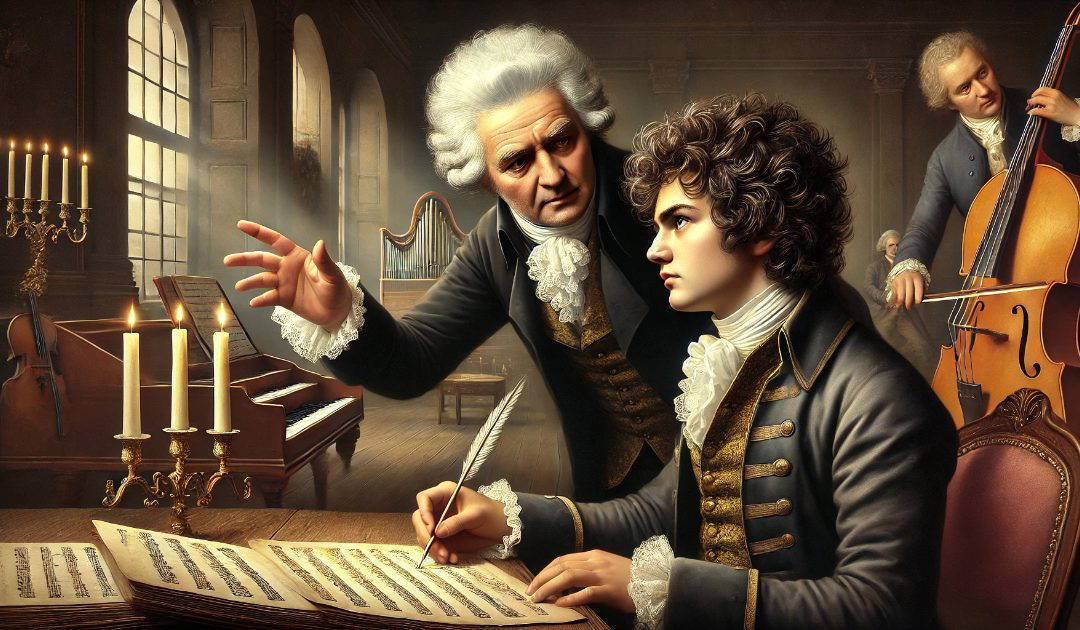The On This Day website tells me that on the twelfth of December 1792, Beethoven had his first lesson in composition from Haydn. I’ve posted about being interviewed at the Dartmouth Book Festival by John Suchet. I doubt that anyone knows more about Beethoven than John, so it caught my attention. Here’s what I’ve found out. Joseph Haydn briefly taught Ludwig van Beethoven composition during the late 18th century, but their relationship was somewhat complex. Beethoven studied under Haydn from late 1792 to early 1794, shortly after Beethoven moved to Vienna.
Haydn focused on teaching Beethoven the principles of counterpoint, the intricate interplay of independent melodic lines. This was a cornerstone of classical composition and something Haydn excelled in as a master of the Classical style. Haydn, renowned for his symphonies, string quartets, and sonatas, helped Beethoven understand the Classical forms that would underpin his early works, such as sonata form, variation techniques, and the structure of multi-movement works. Although Beethoven already had some training, Haydn probably guided him in refining his orchestration skills and in developing a deeper understanding of the Classical idiom, which Beethoven later expanded upon dramatically.
Beethoven apparently felt that Haydn didn’t give him the rigorous training he sought and even complained that Haydn often left his work uncorrected. Beethoven later sought instruction from other teachers, such as Johann Georg Albrechtsberger and Antonio Salieri. Haydn was approaching the end of his career, and his teaching style might not have aligned with Beethoven’s intense, ambitious nature. Haydn, being a genial and somewhat relaxed teacher, may have underestimated Beethoven’s thirst for rigorous critique.
Despite any tensions, Beethoven respected Haydn as a composer. This influence is evident in Beethoven’s early works, such as his First Symphony and Op. 18 String Quartets, which show traces of Haydn’s stylistic fingerprints, though Beethoven soon moved toward his own revolutionary style.

